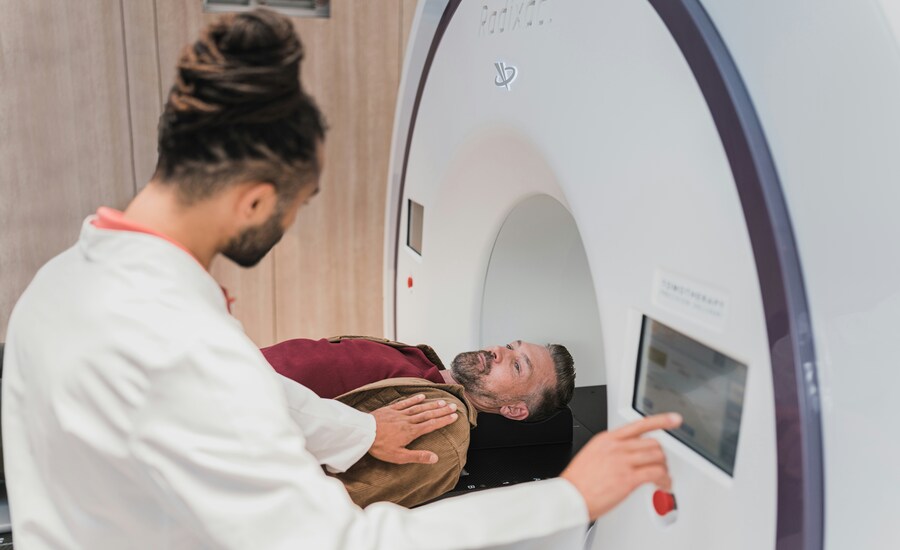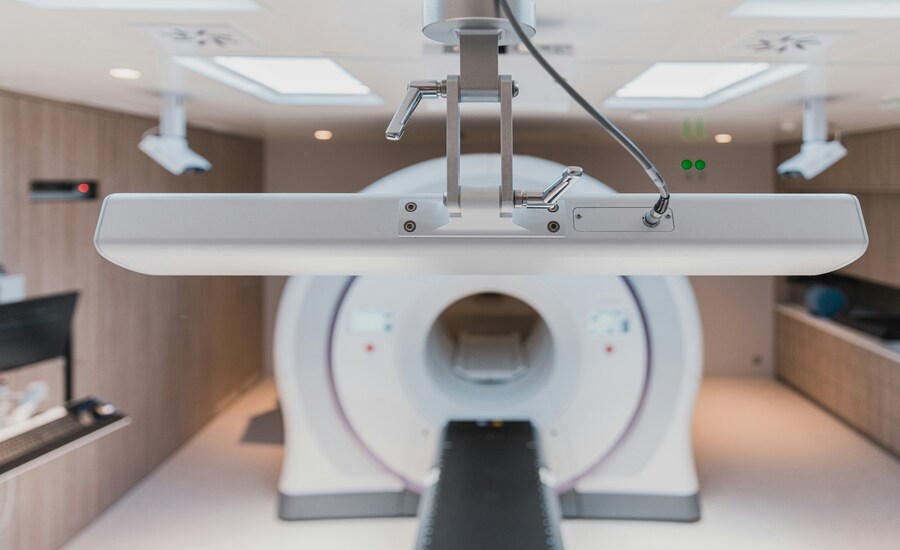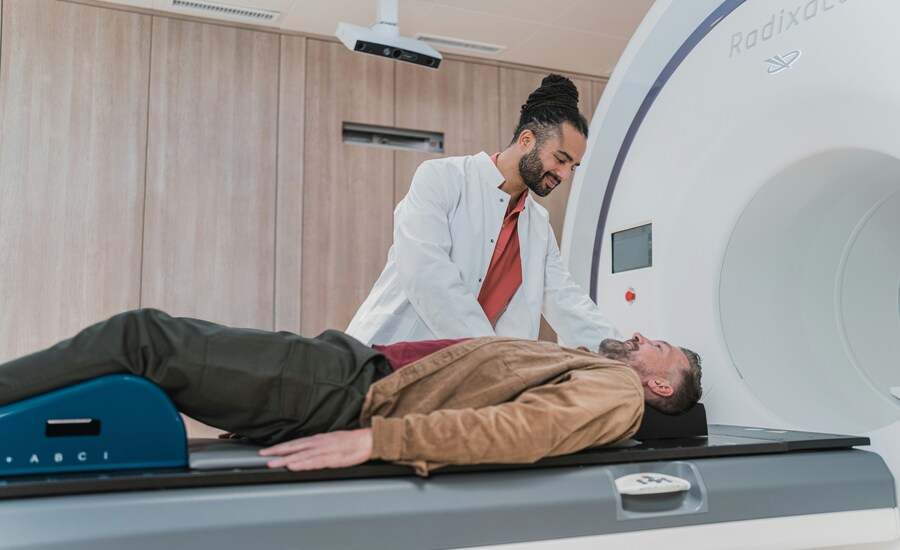What is a CT Tech: How To Become a CT Scan Technologist
Becoming a CT scan technologist is a rewarding career path for individuals interested in healthcare, patient care, and diagnostic imaging. CT scan technologists, also known as computed tomography technologists, are skilled professionals who use specialized equipment to create detailed cross-sectional images of the body’s internal structures. These images help doctors diagnose diseases and injuries, plan treatments, and monitor the effectiveness of medical interventions. In this comprehensive guide, we will delve into every aspect of the profession, from the educational requirements to the daily responsibilities, skills needed, job prospects, and opportunities for career growth.
The Role of a CT Scan Technologist
A CT scan technologist plays a critical role in healthcare by producing high-quality diagnostic images that assist in the diagnosis and treatment of various medical conditions. CT scans, or CAT (computed axial tomography) scans, are specialized X-rays that provide detailed images of the body’s internal organs, bones, blood vessels, and soft tissues. These images are essential for identifying issues such as tumors, fractures, blood clots, and infections.

Responsibilities of a CT Scan Technologist and how to become ct tech
CT scan technologists perform a variety of tasks on a daily basis. Some of their core responsibilities include:
- Patient Interaction and Preparation: One of the primary responsibilities of a CT scan technologist is to interact with patients before the scan. This includes explaining the procedure, answering any questions the patient may have, and ensuring they are comfortable. The technologist must also position the patient correctly on the CT scanner bed to capture accurate images.
- Operation of CT Scanner Equipment: CT scan technologists are responsible for operating the CT scanning machine, which involves adjusting settings, selecting the correct scan parameters, and ensuring the machine is functioning properly. They must be knowledgeable about the technology and capable of troubleshooting issues if they arise.
- Image Acquisition: After positioning the patient and setting up the equipment, the CT scan technologist captures images of the specific area of the body as ordered by the physician. This requires precision and attention to detail to ensure the images are clear and diagnostic.
- Patient Safety: Ensuring patient safety is a top priority. Technologists must take measures to minimize radiation exposure, particularly for vulnerable populations like children and pregnant women. They also monitor patients for any adverse reactions during or after the scan, especially if contrast dye is used.
- Collaboration with Healthcare Team: CT scan technologists work closely with radiologists, who interpret the images, and other members of the healthcare team. They may communicate directly with physicians regarding patient conditions, scan results, or any concerns during the scanning process.
- Record Keeping and Documentation: Proper documentation is essential in healthcare. CT scan technologists maintain records of each scan, including patient details, scan parameters, and any relevant notes. This documentation is important for both medical records and billing purposes.
Educational Pathways to Becoming a CT Scan Technologist
The journey to becoming a CT scan technologist begins with acquiring the necessary education and training. While the specific requirements may vary by state and employer, there are several general steps that aspiring CT technologists typically follow.
Step 1: High School Education
The first step in the journey is to obtain a high school diploma or equivalent. Students interested in pursuing a career as a CT scan technologist should focus on science courses such as biology, chemistry, and physics. Mathematics and computer science are also beneficial, as they provide a strong foundation for understanding the technology used in CT scanning.
Step 2: Earning a Degree or Certificate in Radiologic Technology
After high school, aspiring CT scan technologists typically need to earn a post-secondary degree or certificate in radiologic technology. The most common educational pathways are:
- Associate Degree in Radiologic Technology: This is the most common route for individuals pursuing a career in radiologic technology. It typically takes two years to complete and includes both classroom instruction and clinical training. Courses cover topics such as anatomy, radiation physics, patient care, and medical ethics.
- Bachelor’s Degree in Radiologic Technology: Some individuals choose to pursue a bachelor’s degree, which takes about four years to complete. A bachelor’s degree provides a more in-depth education and may offer greater opportunities for career advancement. Graduates with a bachelor’s degree may also have more options for specialization within the field of medical imaging.
- Certificate Programs: For individuals who already hold a degree in a related healthcare field, such as nursing or respiratory therapy, there are certificate programs available in radiologic technology. These programs are shorter in duration, typically lasting one to two years, and focus on the specific skills and knowledge required for radiologic imaging.
Step 3: Clinical Training
Clinical training is an essential component of radiologic technology programs. Students gain hands-on experience by working in real healthcare settings, such as hospitals and imaging centers. During clinical rotations, students learn how to operate imaging equipment, work with patients, and develop the skills needed to succeed as a CT scan technologist.
Step 4: Certification and Licensure
After completing an accredited radiologic technology program, graduates must obtain certification and licensure to practice as a CT scan technologist. Certification is typically obtained through the American Registry of Radiologic Technologists (ARRT), which is the national certifying body for radiologic technologists in the United States.
To become certified, individuals must pass the ARRT certification exam in radiography. Once certified, technologists can pursue additional certification in CT scanning. In some states, a state-specific license is also required to practice. Requirements for licensure vary by state, so it’s important to check with the state’s health department or licensing board.
Step 5: Specialization in CT Scanning
While radiologic technologists are trained in general diagnostic imaging, specialization in CT scanning requires additional training and certification. Many technologists choose to gain experience in the field and then pursue certification in computed tomography. This may involve completing additional coursework, clinical training, and passing the ARRT’s certification exam in CT scanning.

Skills and Qualities of a Successful CT Scan Technologist: CT technologist education requirements
Being a successful CT scan technologist requires a combination of technical skills and interpersonal qualities. Individuals who excel in this field possess a range of abilities that enable them to perform their job efficiently while providing high-quality patient care.
Technical Skills
- Knowledge of Imaging Technology: CT scan technologists must have a deep understanding of the technology and equipment used in computed tomography. This includes knowing how to operate the CT scanner, adjust settings, and troubleshoot technical issues.
- Attention to Detail: Producing accurate and diagnostic images requires meticulous attention to detail. Technologists must ensure that the patient is positioned correctly and that the scan parameters are set appropriately.
- Radiation Safety: Understanding the principles of radiation safety is critical. Technologists must minimize radiation exposure to patients and themselves by following established protocols and guidelines.
- Problem-Solving Skills: CT scan technologists must be able to think critically and solve problems quickly. This includes addressing technical issues with the equipment, as well as responding to unexpected patient reactions during the scan.
- Computer Literacy: CT scanners are operated using computer software, so technologists must be comfortable using computers and learning new software systems as needed.
Interpersonal Skills
- Communication: CT scan technologists must communicate effectively with patients, particularly when explaining the procedure and addressing any concerns. They must also collaborate with radiologists, nurses, and physicians as part of the healthcare team.
- Empathy and Compassion: Working with patients who may be anxious or uncomfortable requires empathy and compassion. Technologists must be sensitive to the needs of their patients and provide reassurance during the scanning process.
- Patience: Patience is essential, especially when working with pediatric, elderly, or physically challenged patients. Technologists must be patient and adaptable to the needs of each individual.
- Professionalism: Maintaining a high level of professionalism is important in all healthcare roles. This includes following ethical guidelines, maintaining patient confidentiality, and demonstrating respect for patients and colleagues.
Career Opportunities and Advancement in the Field of CT Scanning
The demand for CT scan technologists is expected to grow in the coming years, driven by advances in medical imaging technology and an aging population. As a result, there are a variety of career opportunities and pathways for advancement within the field.
Job Outlook and Employment Opportunities
According to the U.S. Bureau of Labor Statistics (BLS), employment of radiologic technologists is projected to grow by 9% from 2020 to 2030, which is faster than the average for all occupations. This growth is largely due to the increasing need for diagnostic imaging services in hospitals, outpatient centers, and diagnostic laboratories.
CT scan technologists can work in a variety of healthcare settings, including:
- Hospitals: The majority of CT scan technologists work in hospital settings, where they perform scans for emergency room patients, inpatients, and outpatients.
- Outpatient Imaging Centers: Many diagnostic imaging centers specialize in outpatient services, providing CT scans and other imaging procedures for individuals referred by their physicians.
- Specialty Clinics: Some CT scan technologists work in specialty clinics, such as cancer treatment centers or orthopedic clinics, where they provide imaging services specific to the clinic’s focus.
Advancement and Specialization Opportunities
CT scan technologists who gain experience and additional certifications can pursue opportunities for career advancement. Some potential paths for advancement include:
- Lead CT Technologist or Supervisory Roles: With experience, CT scan technologists may advance to lead or supervisory positions within their department. These roles involve overseeing the work of other technologists, managing schedules, and ensuring the quality of imaging services.
- Specialization in Other Imaging Modalities: Radiologic technologists have the opportunity to specialize in other imaging modalities, such as magnetic resonance imaging (MRI), mammography, or nuclear medicine. Specializing in multiple modalities can make technologists more versatile and valuable in the workplace.
- Radiologic Technologist Educator: Experienced CT scan technologists who enjoy teaching may choose to become educators in radiologic technology programs. Educators teach students the technical and clinical skills required to succeed as radiologic technologists.
- Pursuing Advanced Certifications: Obtaining advanced certifications in areas such as vascular imaging, cardiac CT, or interventional radiology can open the door to higher-level positions and specialized roles within medical imaging.
- Radiologist Assistant (RA): Some technologists may choose to pursue further education and training to become a radiologist assistant, a more advanced role that allows them to perform certain radiologic procedures under the supervision of a radiologist.

Challenges and Rewards of Being a CT Scan Technologist
While being a CT scan technologist is a fulfilling career, it comes with its challenges and rewards.
Challenges
- Exposure to Radiation: Although radiation exposure is minimized through safety protocols, technologists must remain vigilant in following these guidelines to protect themselves and their patients.
- Emotional Strain: Working with patients who are undergoing serious medical evaluations can be emotionally challenging. Technologists must balance their compassion for patients with the need to maintain professionalism and perform their duties efficiently.
- Physical Demands: The job can be physically demanding, as technologists may need to assist patients onto the scanning table, move equipment, and stand for long periods.
- Fast-Paced Environment: Hospitals and imaging centers can be fast-paced environments, particularly in emergency or trauma situations. Technologists must be able to work quickly and accurately under pressure.
Rewards
- Patient Impact: One of the most rewarding aspects of being a CT scan technologist is the opportunity to make a positive impact on patients’ lives. By providing critical diagnostic images, technologists contribute to the detection and treatment of medical conditions, ultimately improving patient outcomes.
- Job Stability: The healthcare field offers excellent job stability, and the growing demand for diagnostic imaging services ensures that CT scan technologists will continue to be in demand.
- Opportunities for Advancement: The field offers numerous opportunities for career growth and specialization, allowing technologists to continually develop their skills and advance in their careers.
- Competitive Salary: According to the BLS, the median annual wage for radiologic technologists, including CT scan technologists, was $61,900 in May 2020. Salaries can vary based on experience, education, location, and the specific healthcare facility, but overall, CT scan technologists enjoy competitive compensation for their expertise.
How to Excel as a CT Scan Technologist: Tips for Success
To excel as a CT scan technologist and advance in the field, there are several key strategies and best practices to keep in mind:
Continuing Education and Professional Development
- Stay Current with Technology: Medical imaging technology is constantly evolving, so it’s important for CT scan technologists to stay up to date with the latest advancements. This may involve attending workshops, taking continuing education courses, or pursuing additional certifications in specialized imaging techniques.
- Seek Mentorship: Connecting with experienced technologists and radiologists can provide valuable insights and guidance as you develop your career. Mentorship can help you navigate challenges, improve your technical skills, and explore new career opportunities.
- Join Professional Organizations: Becoming a member of professional organizations such as the American Society of Radiologic Technologists (ASRT) or the Radiological Society of North America (RSNA) can provide access to resources, networking opportunities, and continuing education programs.
- Commit to Lifelong Learning: Healthcare is a dynamic field, and committing to lifelong learning is essential for maintaining your skills and advancing your career. This may include pursuing higher education, attending conferences, or staying informed about new research and developments in medical imaging.
Patient Care and Communication
- Build Rapport with Patients: Establishing a positive rapport with patients can help put them at ease during the scanning process. Be attentive, listen to their concerns, and explain the procedure clearly and empathetically.
- Develop Strong Communication Skills: Effective communication with both patients and colleagues is essential. Clear communication ensures that patients understand the procedure and that any issues or concerns are addressed promptly.
- Stay Organized: The ability to stay organized is critical in a fast-paced healthcare environment. Keep track of patient records, scan parameters, and documentation to ensure accuracy and efficiency.
- Prioritize Patient Safety: Always prioritize patient safety by following radiation safety protocols and monitoring patients for any adverse reactions during or after the scan. Ensuring patient comfort and minimizing radiation exposure are key responsibilities.
Conclusion: What is a ct tech
Becoming a CT scan technologist offers a fulfilling career path for individuals who are passionate about healthcare, technology, and patient care. From obtaining the necessary education and certifications to developing essential skills and pursuing career advancement, the journey to becoming a CT scan technologist is both challenging and rewarding. With job stability, competitive salaries, and opportunities for specialization, this career offers a promising future for those who are committed to making a positive impact in the medical field.





